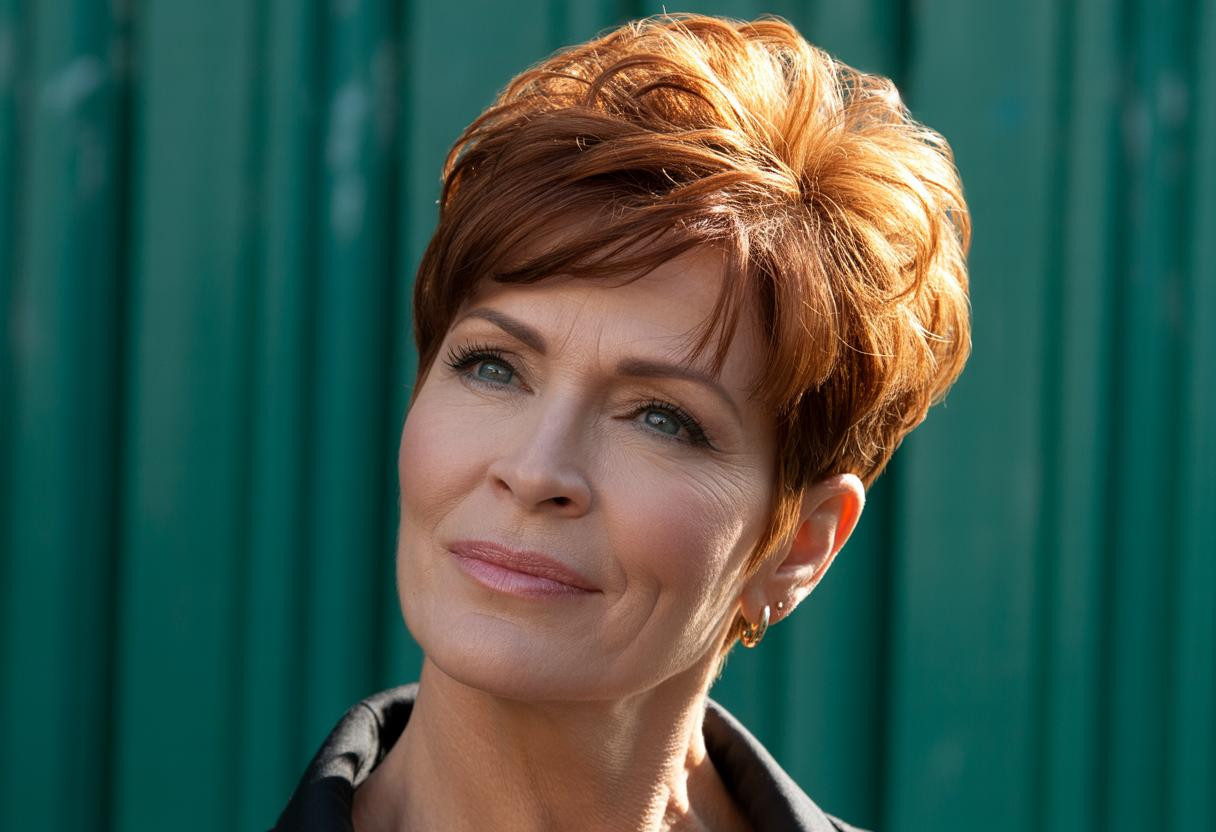At 52, I watched my longtime hairdresser create what she called “volume magic” with just scissors and strategic layering. No teasing, no heavy products—just a precision pixie cut with undercut layers that gave me more lift than years of backcombing ever did. This wasn’t the aggressive layering of decades past, but something entirely different: structural volume designed specifically for women 45+.
Why cutting techniques beat products after 45
Our hair changes dramatically during perimenopause and beyond, becoming finer and losing density at the crown and temples. Traditional volumizing mousses and sprays often weigh down already delicate strands, creating the opposite effect we’re seeking. Strategic cutting techniques work with our hair’s natural texture rather than against it.
Think of it like architecture: instead of adding heavy decorations to a delicate structure, you redesign the foundation itself. Modern stylists use density mapping to identify exactly where your hair needs lift, then create layers that redistribute weight for maximum impact.
The fountain cut revolution
This 2025 technique creates a “waterfall effect” using minimal layering. Longer layers in front curve backward naturally, mimicking volume without the bulkiness that can overwhelm mature faces. Just like longer jackets create vertical lines, the fountain cut uses strategic angles to lift and elongate.
My friend Sarah, 48, transformed her flat, shoulder-length hair with this technique. Her stylist created swooping layers that start at her jawline, giving her face-framing movement that photographs beautifully for her real estate career.
Celebrity secrets worth copying
Jane Fonda’s layered pixie with angled top sections proves that volume doesn’t require length. The secret lies in leaving longer layers on top while trimming underneath—creating natural lift without daily styling. Helen Mirren’s pompadour updos work similarly, elevating crown sections for instant sophistication.
These aren’t accident cuts. Each layer placement considers face shape, hair texture, and lifestyle needs of women who want elegance without high maintenance.
Face shape mathematics
Modern layering follows precise formulas based on facial geometry:
- Oval faces: Subtle layers starting at ear level maintain natural proportions
- Round faces: Angled layers beginning at the jawline create vertical emphasis
- Square faces: Soft, rounded layers around temples soften angular features
- Heart-shaped faces: Pixie undercuts with side bangs balance wider foreheads
The maintenance reality
Here’s what nobody tells you: precision cuts require precision maintenance. Plan for trims every 6-8 weeks to maintain layer integrity. However, daily styling becomes infinitely easier. Like switching to oversized blouses that require no tucking, well-cut layers need minimal morning effort.
Use cool-shot blow dryers to set volume without heat damage, and apply texturizing sprays only mid-length to ends—never at roots where they can create flatness.
Color placement amplifies cutting success
Strategic color placement works hand-in-hand with cutting techniques. Root darkening combined with subtle balayage creates contrast that makes hair appear denser. This isn’t about covering gray—it’s about creating depth that enhances your cut’s natural movement.
Common mistakes that flatten results
Over-layering remains the biggest pitfall, especially for fine hair. Too many layers reduce natural movement and can make hair appear thinner. Crown flatness happens when stylists forget to cut longer top layers for height. Just as lightweight coats create better silhouettes than heavy ones, strategic rather than excessive layering creates superior volume.
The revolution isn’t about fighting age—it’s about working with the beautiful woman you are today, using techniques that honor both your experience and your evolving style needs.
